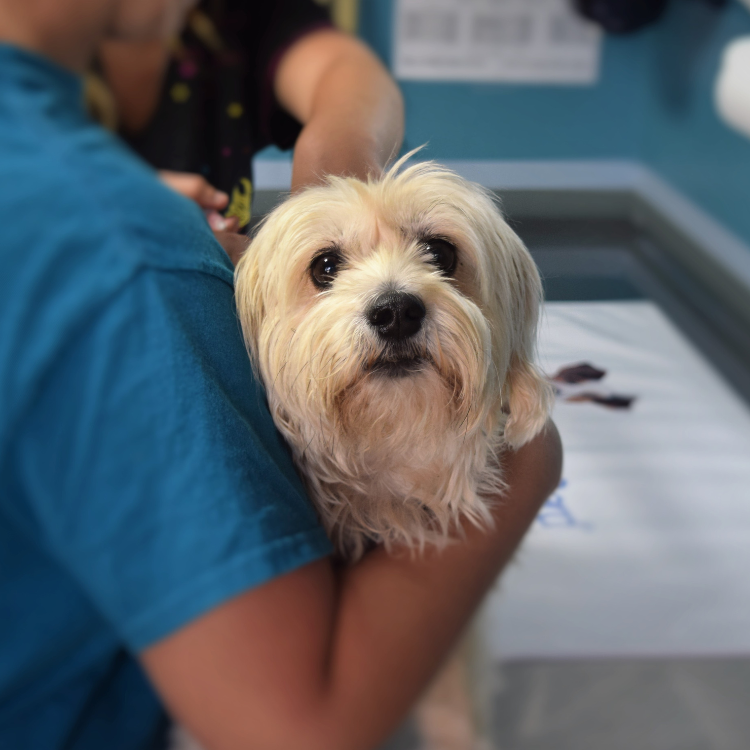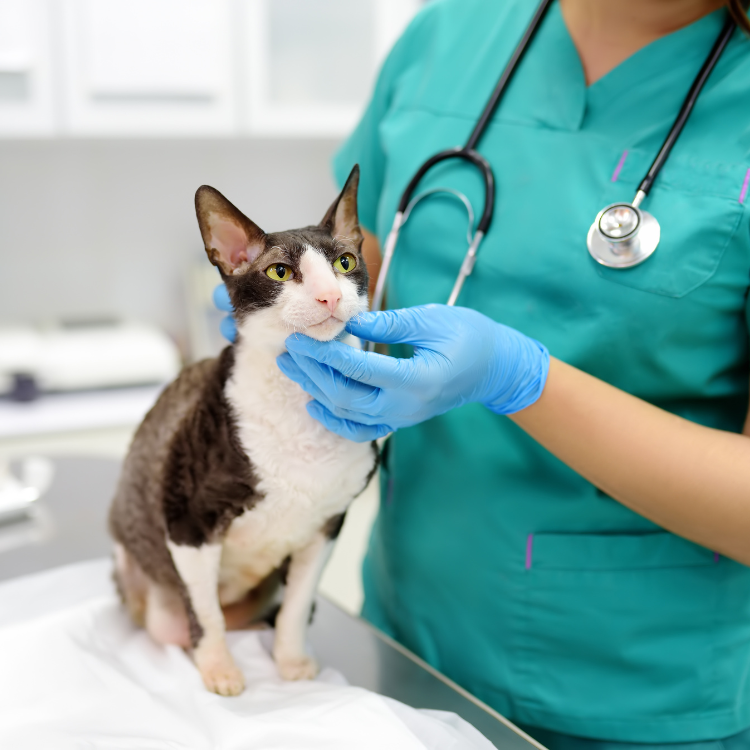Pets bring immense joy and companionship into our lives, becoming cherished members of our families. Like humans, pets can face unexpected health issues and accidents, leading to substantial veterinary bills.
Pet insurance is a valuable tool that helps cover the cost of medical care for our furry friends, ensuring they receive the best possible treatment without causing financial strain.
Planning for unexpected veterinary expenses with pet insurance is a responsible way to safeguard your pet’s health and your finances.

What is Pet Insurance?
Pet insurance operates similarly to human health insurance, providing coverage for medical expenses related to your pet’s health. It is designed to help offset the costs of unexpected veterinary care, making it easier for pet owners to manage the financial impact of their pet’s medical needs.
3 Common Types of Pet Insurance Coverage
1. Accident and Illness: This is the most comprehensive type of pet insurance covering illnesses and accidental injuries. It protects against various health issues, from chronic diseases to sudden accidents.
2. Accident-Only: These plans are more affordable and cover injuries resulting from accidents, such as broken bones or ingesting foreign objects. However, they do not cover illnesses or preventive care.
3. Wellness or Preventive Care: Often offered as an add-on to the other types of plans, wellness coverage includes routine care such as vaccinations, dental cleanings, and regular check-ups. It helps manage the cost of preventive health care to keep your pet healthy.

Why Should I Get Pet Insurance?
Pet insurance provides a financial safety net during emergencies, allowing you to focus on your pet’s well-being without worrying about the cost.
Here are some compelling reasons to consider pet insurance
1. Financial Security During Emergencies: Unexpected veterinary bills can be substantial, especially for severe conditions or accidents. Pet insurance helps cover these costs, ensuring your pet gets the necessary treatment without straining your finances.
2. Peace of Mind for Pet Owners: Knowing you have a plan for your pet’s health emergencies provides peace of mind. You can decide based on what’s best for your pet rather than being limited by financial constraints.
3. The High Cost of Veterinary Treatments: Veterinary care can be expensive, especially in emergencies. Treatments for conditions like broken bones, foreign object ingestion, or chronic illnesses such as diabetes or arthritis can quickly add up. With pet insurance, you can manage these costs more effectively, avoiding difficult financial decisions during stressful times.
Pet insurance proactively ensures your pet receives the best care possible while protecting your financial stability.
By understanding the different types of pet insurance and their benefits, you can make an informed decision that best suits your pet’s needs.

How Does Pet Insurance Work?
Pet insurance operates on a reimbursement model, providing financial support after you pay for your pet’s medical expenses. Understanding how pet insurance works can help you navigate the process smoothly and maximize your pet’s benefits.
Overview of Lemonade Pet Insurance
Lemonade Pet Insurance is one of our providers offering comprehensive pet coverage. Focusing on transparency and ease of use, they cover various medical expenses related to accidents and illnesses, helping pet owners manage unexpected veterinary costs.
Coverage Details
Lemonade Pet Insurance offers extensive coverage for various medical needs, including:
- Accidents: Coverage includes injuries from incidents such as broken bones, ingestion of foreign objects, and lacerations.
- Illnesses: Policies cover the treatment of diseases, including chronic conditions, hereditary conditions, infections, and infestations.
- Procedures: Coverage extends to necessary procedures, such as surgeries, hospitalizations, and specialty care.
Claim Process and Reimbursement
The claim process with Lemonade Pet Insurance is straightforward and user-friendly:
1. Visit the Vet: Take your pet to any licensed veterinarian in the U.S. for treatment.
2. Pay the Bill: Pay for the veterinary services upfront.
3. File a Claim: Submit your claim through the Lemonade app by providing details of the treatment and the paid invoice.
4. Get Reimbursed: Lemonade will reimburse you directly to your bank account, minus any deductible and co-insurance, once the claim is reviewed and approved.
This reimbursement model ensures you can seek the best care for your pet without worrying about immediate financial constraints.
Key Features and Benefits
Pet insurance plans offer various features and benefits designed to meet pet owners’ diverse needs.
Coverage for Diagnostics, Medications, and Surgeries
Pet insurance typically covers essential medical services, including:
- Diagnostics: Blood tests, urinalysis, X-rays, MRIs, lab work, CT scans, and ultrasounds to diagnose health issues.
- Medications: Coverage for prescription medications and injections required for treatment.
- Surgeries: Financial support for necessary surgical procedures, including emergency and specialty surgeries.

Benefits of Preventative Care Packages
Preventative care packages offer additional benefits to help keep your pet healthy:
- Routine Care: Coverage for wellness visits, vaccinations, dental cleanings, flea prevention, and other routine care.
- Preventative Procedures include spaying or neutering, microchipping, and other essential procedures for young pets.
- Cost Savings: Preventative packages can significantly save annual routine care costs.
Multi-Pet Discounts and Policy Customization
Pet insurance providers often offer discounts and customization options to serve pet owners better:
- Multi-Pet Discounts: Many providers, including Lemonade, offer discounts when you insure multiple pets under one policy.
- Policy Customization: Tailor your policy with add-ons and customizable coverage options to meet your pet’s specific needs, ensuring comprehensive protection.

Pros and Cons of Pet Insurance
While pet insurance offers numerous benefits, it’s essential to consider the advantages and potential limitations.
Benefits of Reimbursement Models
- Financial Relief: Pet insurance can reimburse anywhere from 70% to 100% of unexpected veterinary costs, depending on your policy.
- Flexibility: Most pet insurance plans can be used at any licensed veterinary practice, allowing you to choose your preferred vet.
- Peace of Mind: Knowing you’ll be reimbursed for covered costs allows you to make the best medical decisions for your pet without financial stress.
Limitations and Exclusions
- Pre-Existing Conditions: Pet insurance generally does not cover pre-existing conditions, meaning any health issues your pet had before the policy start date are excluded.
- Routine Care: Standard pet insurance policies typically do not cover routine care, such as vaccinations, spaying/neutering, and annual check-ups, unless you purchase a wellness plan.
- Upfront Payment: Since pet insurance works on a reimbursement basis, you’ll need to pay the vet bill upfront and then wait for reimbursement.
Understanding these pros and cons can help you decide whether pet insurance is right for you and your pet.
Understanding Costs
Pet insurance costs vary widely based on several factors, but understanding these costs can help you choose the best plan for your budget and your pet’s needs.
Average Costs of Pet Insurance (Dog vs. Cat)
On average, the cost of pet insurance for dogs is higher than for cats. According to Market Watch, the average cost in Ohio is:
Dog Insurance: Approximately $59 per month
Cat Insurance: Approximately $32 per month
These costs can fluctuate based on various factors, including the level of coverage and the provider you choose.
Factors Influencing Insurance Premiums
Several factors can influence the cost of your pet insurance premium:
- Location: Veterinary costs can vary by region, affecting insurance premiums.
- Pet’s Age: Older pets generally have higher premiums due to increased risk of illness and injury.
- Breed: Some breeds are more prone to certain health conditions, which can impact insurance costs.
- Coverage Options: Comprehensive policies with higher coverage limits and lower deductibles typically cost more.
- Policy Customization: Adding wellness plans or additional coverage can increase premiums.
Understanding these factors can help you select a policy that provides your pet with the right coverage and affordability.
Stories from Veterinarians and Pet Owners
Veterinarian Perspective: The American Veterinary Medical Association (AVMA) endorses the concept of pet health insurance that provides coverage to help defray the cost of veterinary medical care and encourages veterinary healthcare teams to proactively educate their clients about the existence of such resources. Visit their site for more information.
Pet Owner Testimonials
Cheryl, A pet owner, shares her experience: “When my cat developed a sudden illness, the vet bills quickly increased. Pet insurance allowed me to focus on my cat’s recovery without worrying about the cost. The insurance covered most expenses, and I only had to pay a small deductible.”
Carl, a new puppy owner, said, “ The pet coverage I got for Buddy, my new best friend, has helped me to stay on top of all of his early care, including tests recommended by my vet. We found out his liver isn’t producing an enzyme he needs. Now, he takes a daily chewable, and I can expect him to live a long life. I’m not sure I would have had the extra test done without his insurance. I am doing everything possible to keep my little friend happy and healthy.”
How Pet Insurance Has Helped in Critical Situations
Emergency Treatment: One in three pets will need emergency treatment each year. Pet insurance can cover significant portions of these unexpected expenses, from accidents like fractures and ingesting foreign objects to severe illnesses like parvo disease.
Chronic Conditions: Pet insurance also helps manage long-term costs for chronic conditions like diabetes, arthritis, and heart disease, providing ongoing financial relief.
These real-life examples highlight the importance of having pet insurance to handle unforeseen veterinary expenses, ensuring your pet receives the necessary care without financial stress.
Pet insurance offers a safety net for pet owners, providing financial security and peace of mind when unexpected veterinary bills arise.
By understanding pet insurance’s benefits, costs, and real-life impact, you can make an informed decision to protect your pet’s health and well-being.
As you consider your pet insurance options, remember the importance of comprehensive coverage that meets your pet’s unique needs.
Don’t wait for an emergency to explore pet insurance options. Once something happens, it’s already too late. Start today to ensure your furry friend receives the best care without compromising your financial stability.

Whether you’re a new pet owner or have been caring for your furry friend for years, pet insurance is a valuable tool in safeguarding their health and peace of mind.
Contact your veterinarian and Crunelle, your insurance provider, to discuss the best pet insurance plan for your beloved companion.






